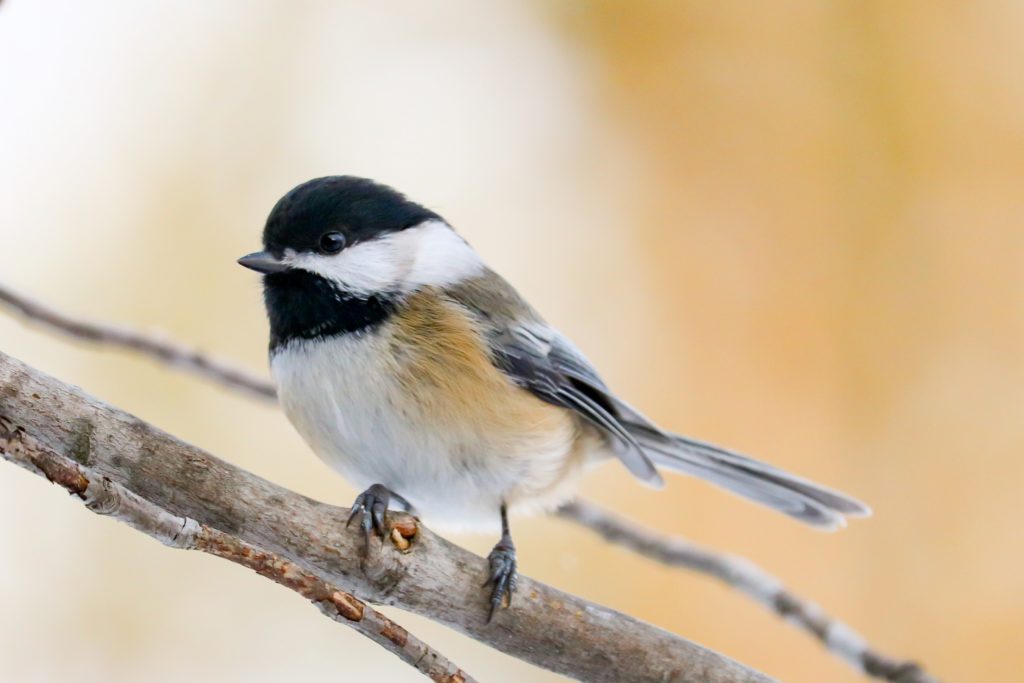
Marissa Gallant & Kyle Jacoby
New England Botanic Garden at Tower Hill Staff
Whether you live in the city, country or suburbs, you can head outside and find a bird! There are over 10,000 different species of birds in the world of countless different sizes, shapes, and colors. Even though they may look completely different-ranging from giant ostriches to tiny hummingbirds and everything in between-all birds share a few common characteristics. All birds have feathers and wings, they are warm-blooded, and they lay eggs. Ornithologists devote their work to uncovering these similarities and differences, studying every aspect of birds, including their songs, physical appearance, migration patterns, and behavior.
Put on your ornithologist hat and learn more about the feathered friends right outside your window. Try creating a simple feeder to attract some visitors, then follow the 6 tips below, and you will be on your way to becoming a birding expert!
1. Use a Field Guide
You don’t have to be an expert to identify birds. A good field guide that focuses on local species can be a birder’s best friend! Peterson’s First Guide to Birds of North America is a great pocket sized guide for a beginning birder.
2. Take a Picture
Using a camera can help you identify the bird you are observing. Snap a photograph with your smart phone or digital camera so you can catch a closer glimpse. Compare to birds in your field guide or work with an adult to use an app like iNaturalist or Cornell Lab’s free Merlin Bird ID to narrow down your search.
3. Make Observations
Even if you cannot identify the bird you are studying in the field, making observations will help you remember what you saw. First, note the bird’s size and shape; then look for its main color pattern. Write down where you found the bird and the behaviors you noticed. Compare the size and shape of the bird to a common species that you know and take note of the size and shape of the wings, the bill and any other parts you can see. Write down your observations to research later.
4. Write it Down
Starting a nature journal is a fun and exciting activity. It will also help you take notes and keep track of the birds you come across. Use colored pencils, pens or crayons to doodle and make observations in nature. You don’t have to be a good artist to keep a nature journal!
5. Listen
Once you have more practice, listening to bird calls and songs is a good way to identify the species. After you have narrowed down your search based on how the bird looks and behaves, tune in to the sounds around you. Work with an adult to use tools like the Merlin Bird ID app or visit AllAboutBirds.org to play sounds from your phone to help identify the species.
6. Use Binoculars
A good pair of binoculars will go a long way in helping you study birds in the field. Practice using your binoculars before you begin your next birding adventure. Become familiar with their magnification, focus and field of vision.
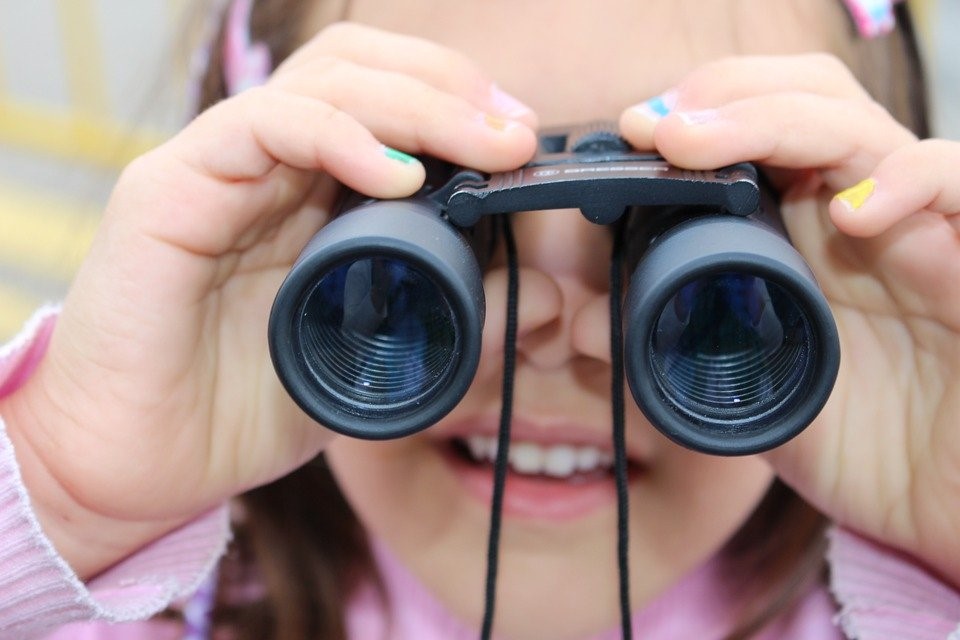
Don’t have a pair of binoculars? Don’t worry, follow the simple steps below to create your own pair before heading out on your next adventure!
You will need:
- Two cardboard tubes
- Crayons, markers, or colored pencils
- Stickers
- Hole punch
- Stapler, paper clips, or tape
- Scissors
- String, yarn, or twine
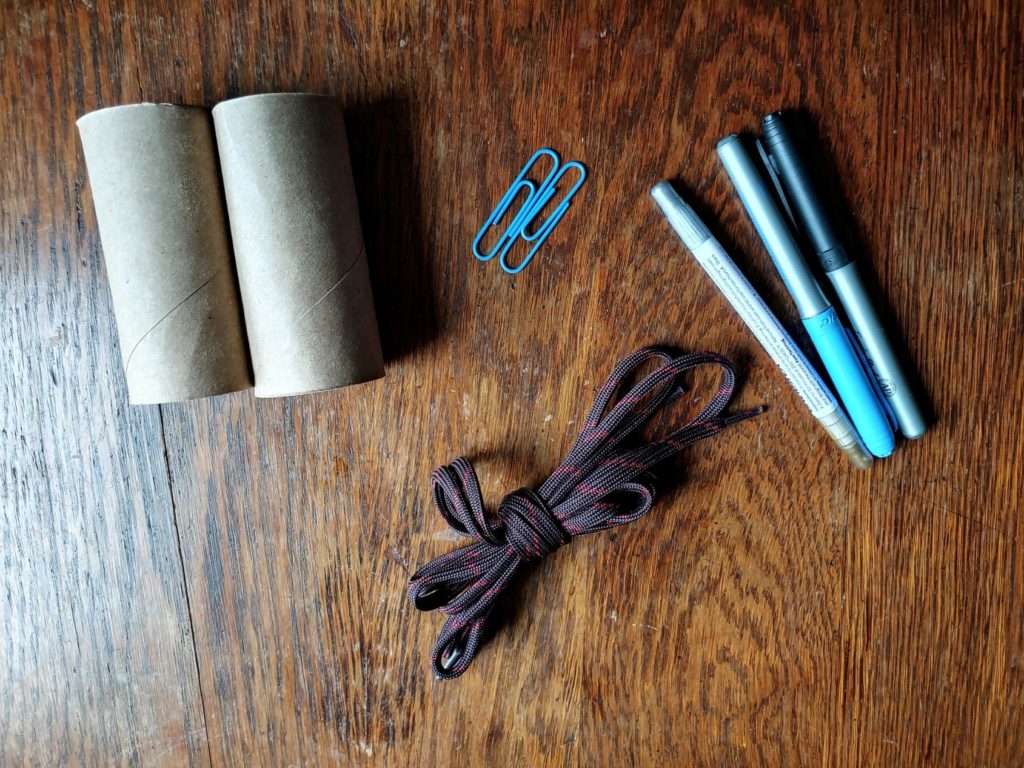
Once you’ve gathered your materials, begin by decorating your cardboard tubes. Be creative and add patterns, text, stickers and more!
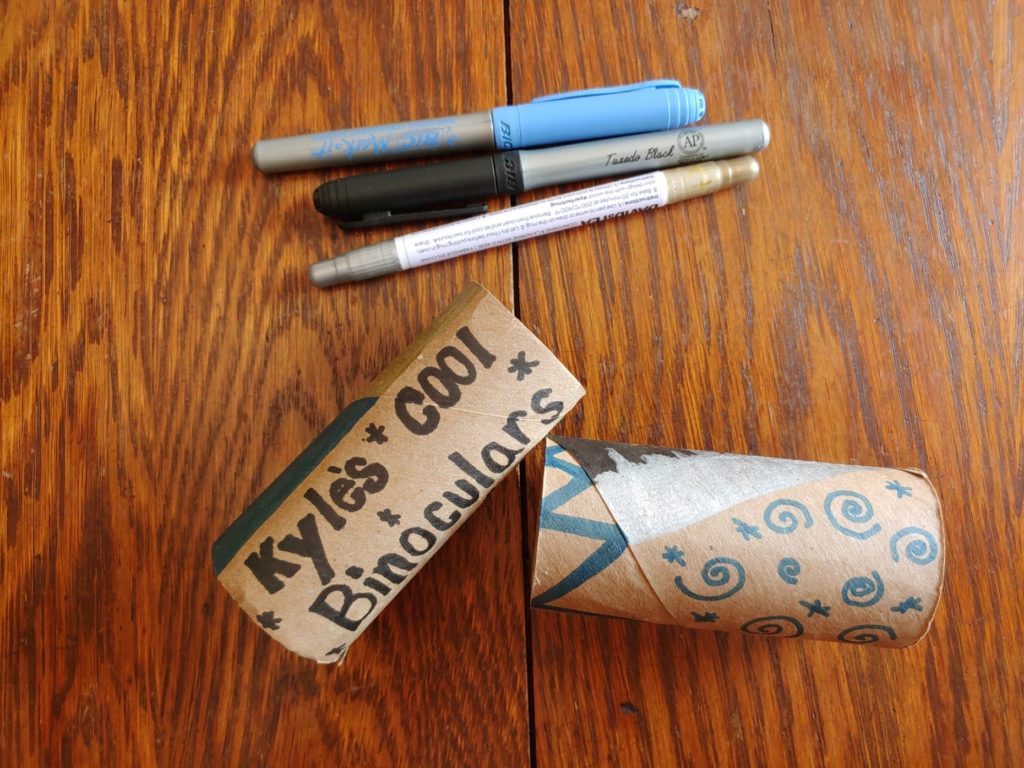
Once you have decorated your cardboard tubes attach them together using a stapler, tape or paperclips.
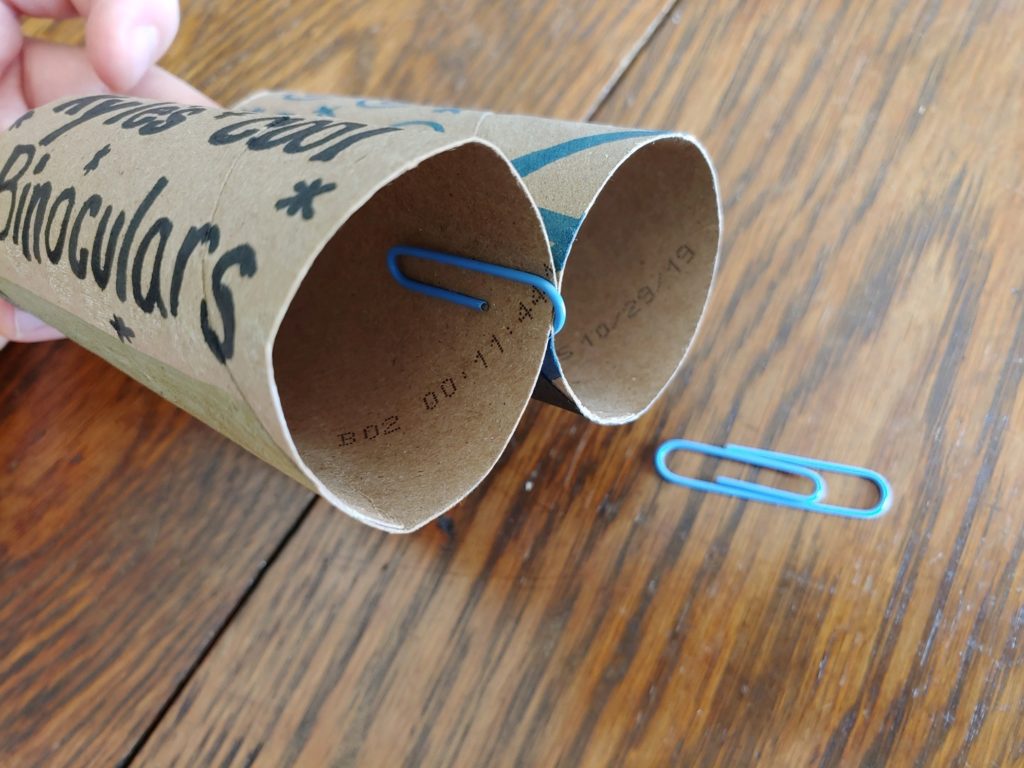
Next use a hole punch or a pen to make holes on the outer side of each tube. Thread a piece of yarn, string or even a shoelace through the holes and tie to secure to the tubes.
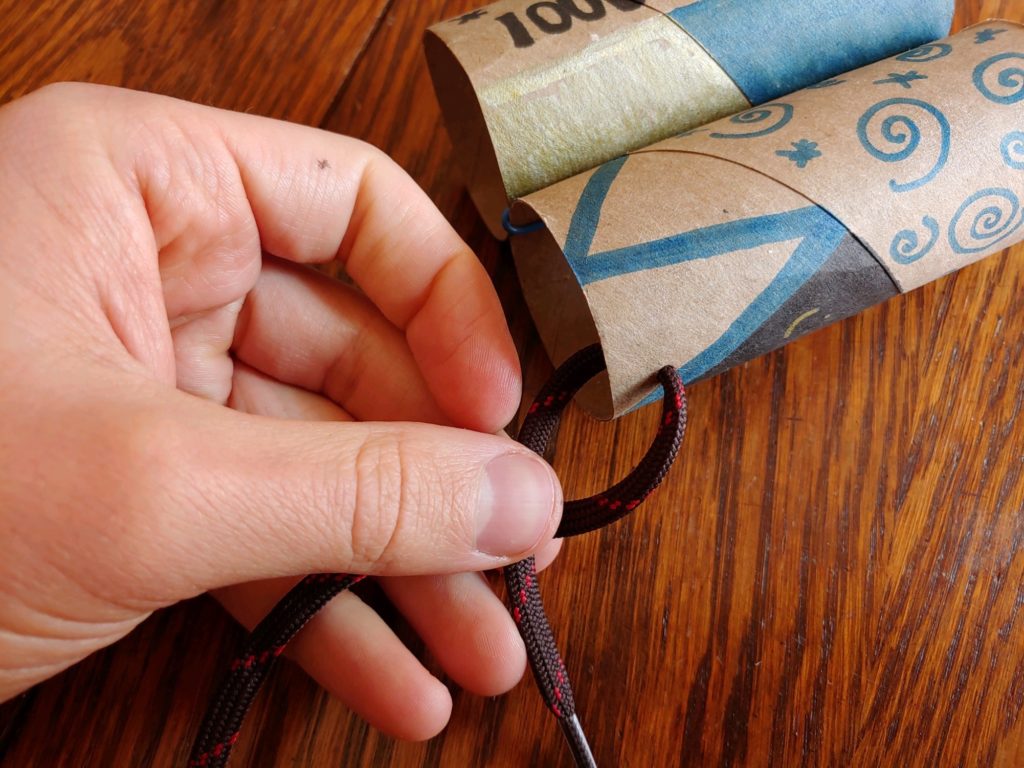
Measure your string to make sure it is long enough fit over your head and put on your binoculars!

***
Head outside and search for birds in your neighborhood. Bring along a field guide and use the Merlin Bird ID app on your smartphone to help you identify the birds you see and hear.
Happy birding!
